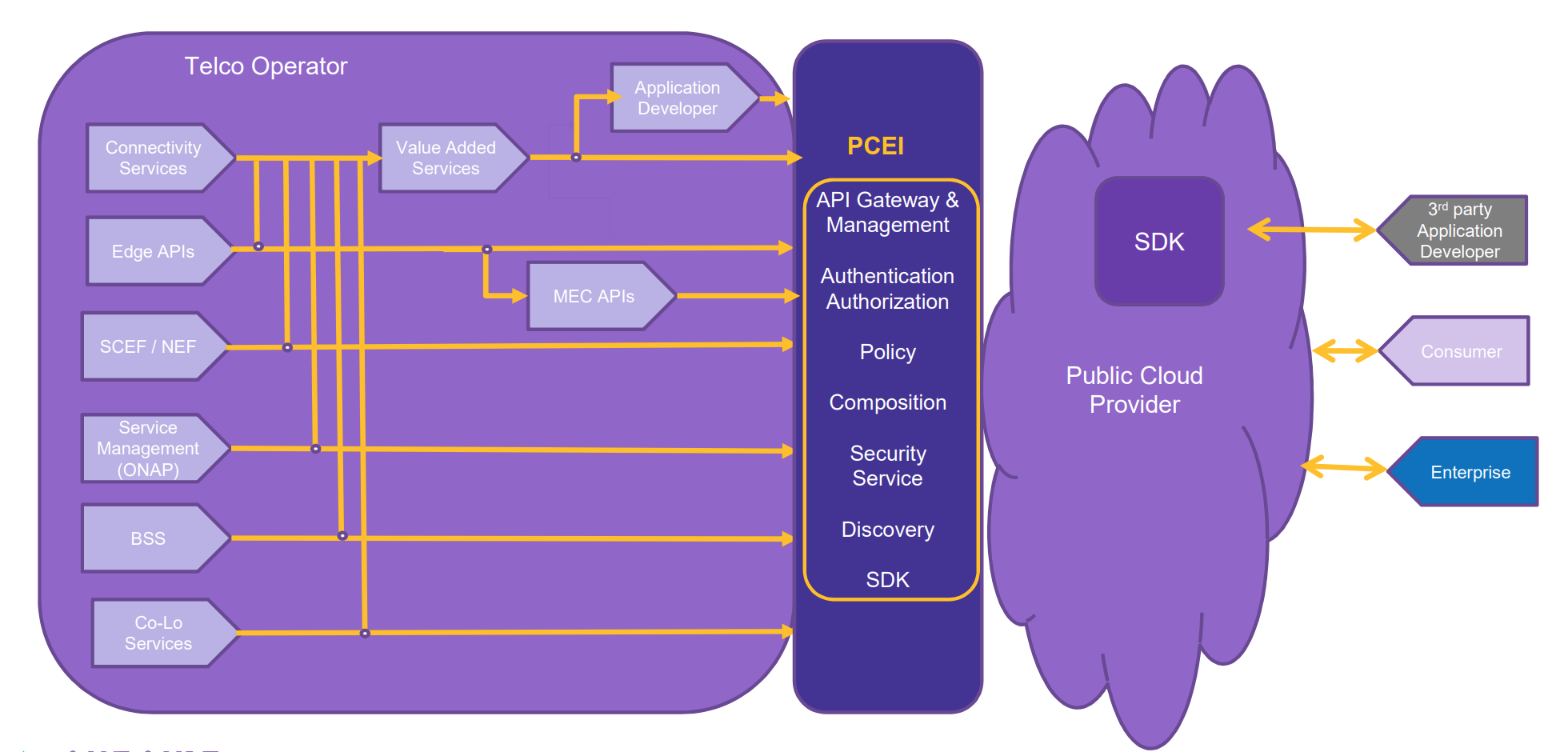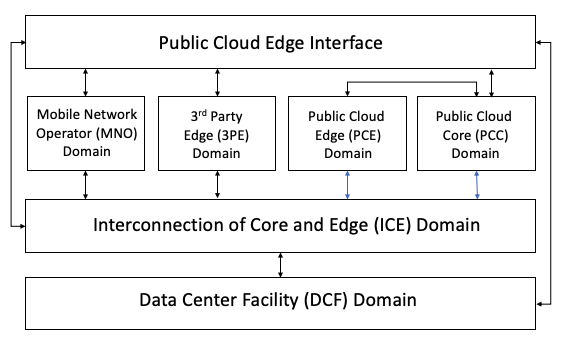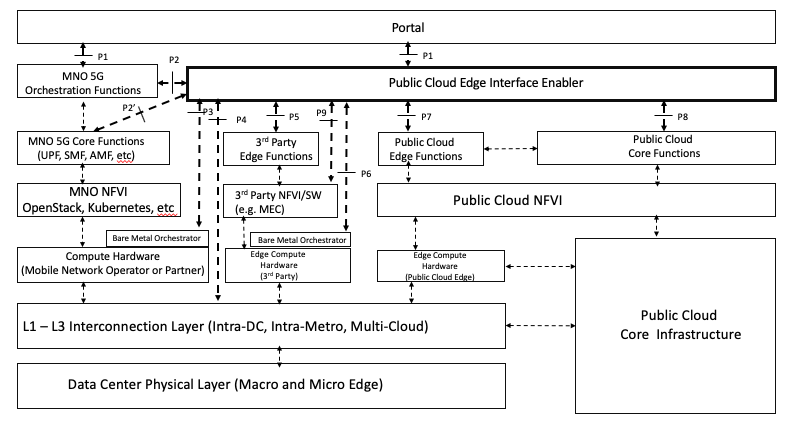//template
Blueprint overview/Introduction
<Purpose- it should introduce what the blue print is about, industry, business use case, applications and where it sits on the edge infrastructure>
<It should be readable by a semi technical audience , e.g. product marketing, business account executives etc>
Use Case
<use case 1>
<use case 2>
<use case 3>
Where on the Edge
Business Drivers
Overall Architecture
<This could inform the non-technical audience, but now is more geared towards a more engaged, technical audience>
< Blue print's relation to Akraino generic architecture, how it relates to it >
< This section will use the Akraino architecture document as reference>
Platform Architecture
<Hardware components should be specified with model numbers, part numbers etc>
Software Platform Architecture
<Software components with version/release numbers >
<EDGE Interface>
<ETSI MEC Interaction>
APIs
APIs with reference to Architecture and Modules
High Level definition of APIs are stated here, assuming Full definition APIs are in the API documentation
Hardware and Software Management
Licensing
GNU/common license
Introduction and Purpose of the PCEI Architecture
The purpose of Public Cloud Edge Interface (PCEI) Blueprint family is to specify a set of open APIs for Telco Edge Blueprints to expose towards Public Cloud Service Provider instances at the Edge. As Public Cloud Service Providers deploy Edge instances to better serve their end users and applications, Telco Edge deployments offer many opportunities for collaboration by exposing their network capabilities to provide value added services.
Currently the challengers includes:
- How to combine the public cloud management interface with telco orchestration interface?
- How to open more telco abilities to public cloud and support the DevOps?
- How to manage and monitor these different APIs in an efficient ways?
- How to guarantee security such as avoid the DDOS or SQL injection attack to telco core network?
- How best to leverage network capabilities to provide value added services?
- Can public cloud use the same APIs towards multiple telco cloud edge instances
This BP family is trying to resolve these challengers for both telco and hyperscalers.
High level architectural view:
Architecture as following. This BP will bring a new "Enabler" layer as PCEI between the Telco network and public cloud platform on edge. The PCEI layer is responsible for :
- API Gateway & Management
- Authentication
- Policy
- Composition
- Security services
- Discovery
- SDK
In southbound, this layer will encapsulate the core network capabilities, interwork with BSS/OSS/management system from telco operators. We first suggest to deploy this layer on telco's edge hardware resource.
And in northbound, it provides RESTFUL APIs and SDKs to be called and integrated by public clouds.
PCEI Reference Architecture and Interface Reference Points
The PCEI Enabler is expected to provide Multi-Domain Interworking capabilities between the following domains:
- The Mobile Network Operator (MNO) Domain
- The Public Cloud (PC) Domain. This includes the following sub-domains:
- The Public Cloud Core (PCC)
- The Public Cloud Edge (PCE)
- The 3rd Party Edge (3PE) Domain
- The Interconnection of Core and Edge (ICE) Domain
- The Data Center Facility (DCF) domain
The following figure shows high-level relationships between the domains:
The Data Center Facility (DCF) Domain. The DCF Domain includes Data Center physical facilities that provide the physical location and the power / space infrastructure for other domains and their respective functions.
The Interconnection of Core and Edge (ICE) Domain. The ICE Domain includes the physical and logical interconnection and networking capabilities that provide connectivity between other domains and their respective functions.
The Mobile Network Operator (MNO) Domain. The MNO Domain contains all Access and Core Network Functions necessary for signalling and user plane capabilities to allow for mobile device connectivity. These functions include the Radio Access Network (RAN), including the 5G New RAN (5GNR), Packet Core, including the Virtualized Evolved Packet Core (vEPC) and the 5G Core (5GC).
The Public Cloud Core (PCC) Domain. The PCC Domain includes all IaaS/PaaS functions that are provided by the Public Clouds to their customers. These include Virtual Private Cloud and Public/Private Networking capabilities.
The Public Cloud Edge (PCE) Domain. The PCE Domain includes the PCC Domain functions that are instantiated in the DCF Domain locations that are positioned closer (in terms of geographical proximity) to the functions of the MNO Domain. In general, the PCE functions are expected to be managed from the PCC functions.
The 3rd party Edge (3PE) Domain. The 3PE domain is in principle similar to the PCE Domain, with a distinction that the 3PE functions may be provided by 3rd parties (with respect to the MNOs and Public Clouds) as stand-alone instances of Edge Computing resources/applications.
The PCEI Reference Architecture and the Interface Reference Points (IRP) are shown in the figure below. Note the this figure also provides a component layer view of the PCEI Architecture:
The PCEI Reference Architecture layers are described below:
The PCEI Data Center (DC) Physical Layer belongs to the DCF Domain and provides the physical DC infrastructure located in appropriate geographies (e.g. Metropolitan Areas). It is assumed that the Public Cloud Core infrastructure is interfaced to the PCEI DC Physical Layer through the PCEI L1-L3 Interconnection layer.
The PCEI L1-L3 Interconnection Layer belongs to the ICE Domain and provides physical and logical interconnection and networking functions to all other components of the PCEI architecture.
Within the MNO Domain, the PCEI Reference Architecture includes the following layers:
- Compute Hardware. This include Compute, Network and Storage resources that support MNO functions. Note that the PCEI Reference Architecture recognizes a model, where a MNO has the ability to distribute the compute infrastructure in appropriate locations in the DCF Domain in order to satisfy performance and functional requirements for the targeted application use cases. For example, a MNO may wish to implement a Local Break-Out (LBO) in locations that are geographically closer to the mobile subscribers, and uses compute hardware provided by a qualified Bare Metal service provider.
- The PCEI Architecture further recognizes a model, where the Compute Hardware layer is accessible via the Bare Metal Orchestrator that enables dynamic instantiation of compute/network resources for the MNO functions.
- Network Function Virtualization Infrastructure (NFVI). This is the virtualization layer (e.g. OpenStack, Kubernetes) that may be specific to MNO requirements and provides the ability to support MNO functions such as the 5GC User Plane Function (UPF).
- MNO Core Functions. This layer corresponds to the key MNO Core functions applicable to the PCEI. These functions include (but not limited to): UPF, SMF and other applicable 4G vEPC and 5G Core functions.
- MNO Orchestration Functions. These functions are responsible for communicating the MNO service/performance requirements to the PCEI Enabler and for orchestrating services within the MNO Domain. Examples of these functions include NSSF, NRF, etc.
Objectives
provide an end to end deployment with this enable layer between telco and public cloud.
Components of Public Cloud Edge Interface
xxx


